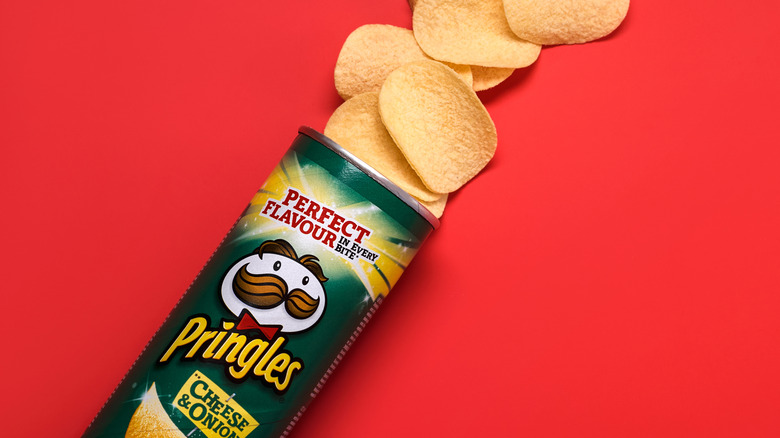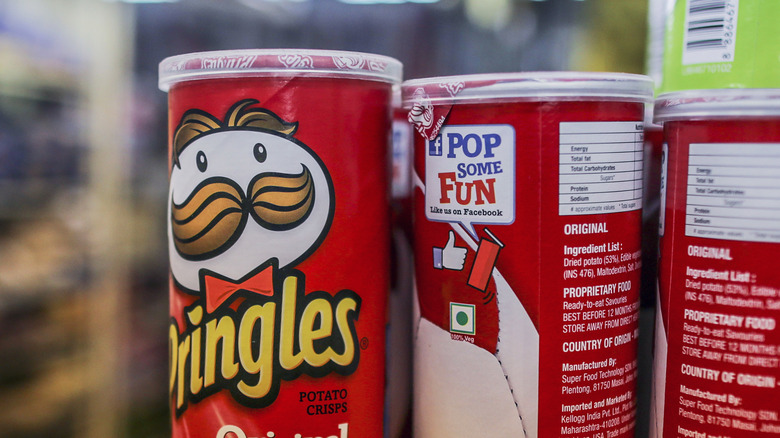Why Does Pringles Place Its Chips In A Can?
Amongst all the bags of chips that are both one-part potatoes and one-part air, one brand of chip stands out. Perhaps it's the unique design of their container that attracts you, or perhaps it's the mustachioed mascot that radiates class and refinement. No matter what the reason, Pringles' crisps are something of a revolution in the world of potato chips.
Invented by food researchers Fred Baur and Alexander Lupia in the 1960s (via Snack History), the potato chip is a bit of a rebel when compared to companies like Lay's or Utz. Unlike other chips, which usually consist of a potato sliced thinly and fried, Pringles are actually made from a dough of dehydrated potato flakes, rice flour, and wheat (via Taste of Home). For some potato chip purists, Pringles aren't so much as a "chip" than they are a "crisp." This difference is designed to ensure that Pringles stay uniform and maintain the same "saddle" shape, unlike other mainstream chips of different sizes and textures.
But challenging the norm of your average potato chip wasn't enough to ensure Pringles would stand up to other Big Chip giants out in the supermarket. What they needed was a whole new way of storage — and Fred Baur was the one to do it.
The cans are meant to ensure uniformity
Now, just because all Pringles were made to look the same didn't mean they were completely break-proof. Putting them in a standard bag would run the risk of the crisps shattering, ruining their entire niche. What they needed was something that would allow the chips to be stacked on top of each other, preventing them from being crushed and keeping their uniform shape. This was the idea behind the famous plastic tube.
Fred Baur designed the model of the first Pringles tube — a task he was well suited for, as he was the man behind the design of the Pringle's trademark shape. To Baur, the designing of the Pringles tube was more than a job, but something that he took pride in his whole life. He took such pride in this achievement in food packaging that when he died in 2008, the food chemist was cremated and his ashes buried within ... you guessed it, a Pringles container (via TIME).
Today, Pringles are still shipped in their famous containers, albeit with a little technological assistance. The distinctive shape of the Pringle is aerodynamic enough that a crisp can go literally flying down the production line. Thus, supercomputers assist in making sure that the crisps won't go flying off the line, but instead into those trademark containers (via HPC Wire). Talk about a lot of work just for an intact chip!

